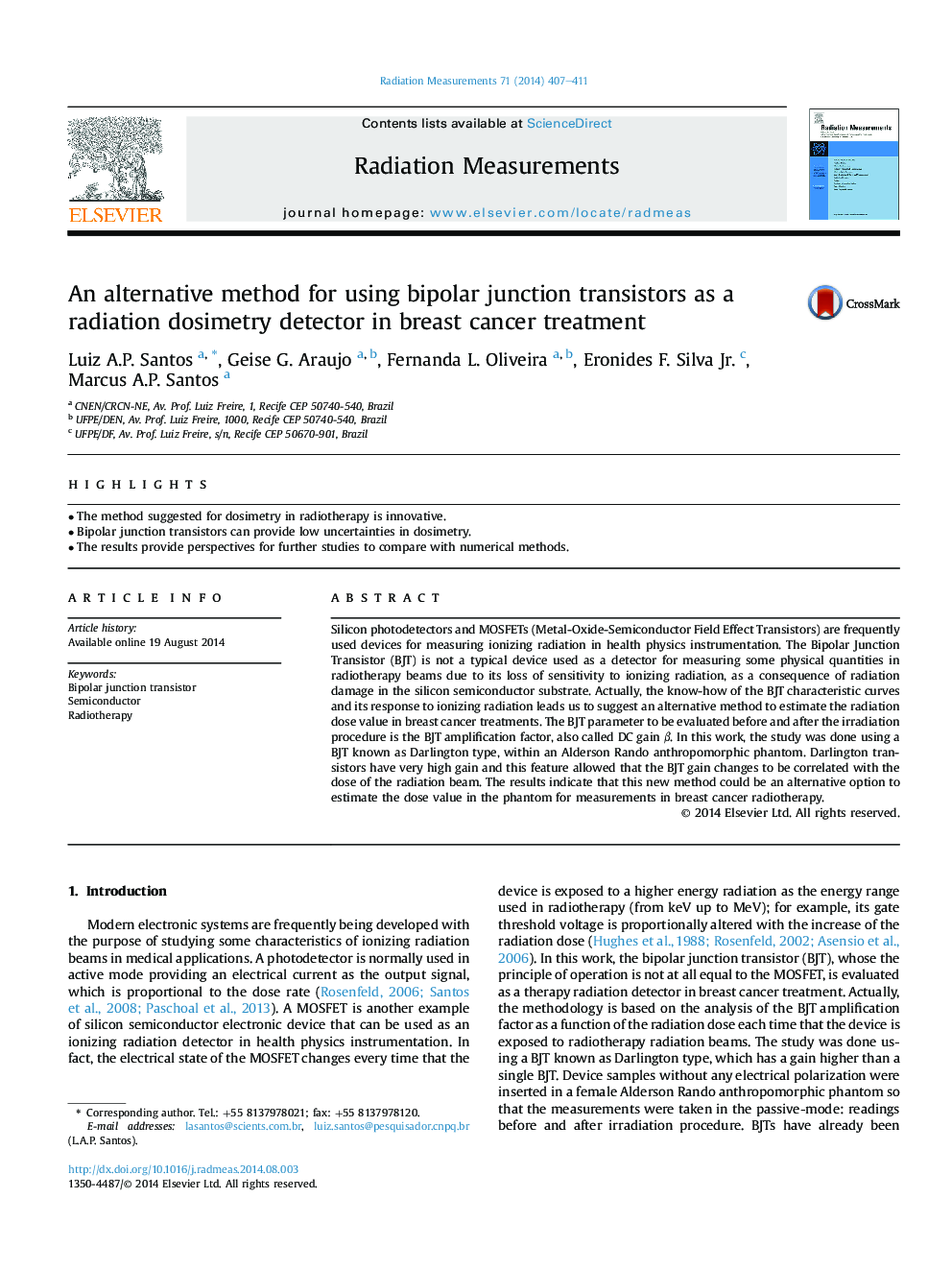| Article ID | Journal | Published Year | Pages | File Type |
|---|---|---|---|---|
| 1880625 | Radiation Measurements | 2014 | 5 Pages |
•The method suggested for dosimetry in radiotherapy is innovative.•Bipolar junction transistors can provide low uncertainties in dosimetry.•The results provide perspectives for further studies to compare with numerical methods.
Silicon photodetectors and MOSFETs (Metal-Oxide-Semiconductor Field Effect Transistors) are frequently used devices for measuring ionizing radiation in health physics instrumentation. The Bipolar Junction Transistor (BJT) is not a typical device used as a detector for measuring some physical quantities in radiotherapy beams due to its loss of sensitivity to ionizing radiation, as a consequence of radiation damage in the silicon semiconductor substrate. Actually, the know-how of the BJT characteristic curves and its response to ionizing radiation leads us to suggest an alternative method to estimate the radiation dose value in breast cancer treatments. The BJT parameter to be evaluated before and after the irradiation procedure is the BJT amplification factor, also called DC gain β. In this work, the study was done using a BJT known as Darlington type, within an Alderson Rando anthropomorphic phantom. Darlington transistors have very high gain and this feature allowed that the BJT gain changes to be correlated with the dose of the radiation beam. The results indicate that this new method could be an alternative option to estimate the dose value in the phantom for measurements in breast cancer radiotherapy.
